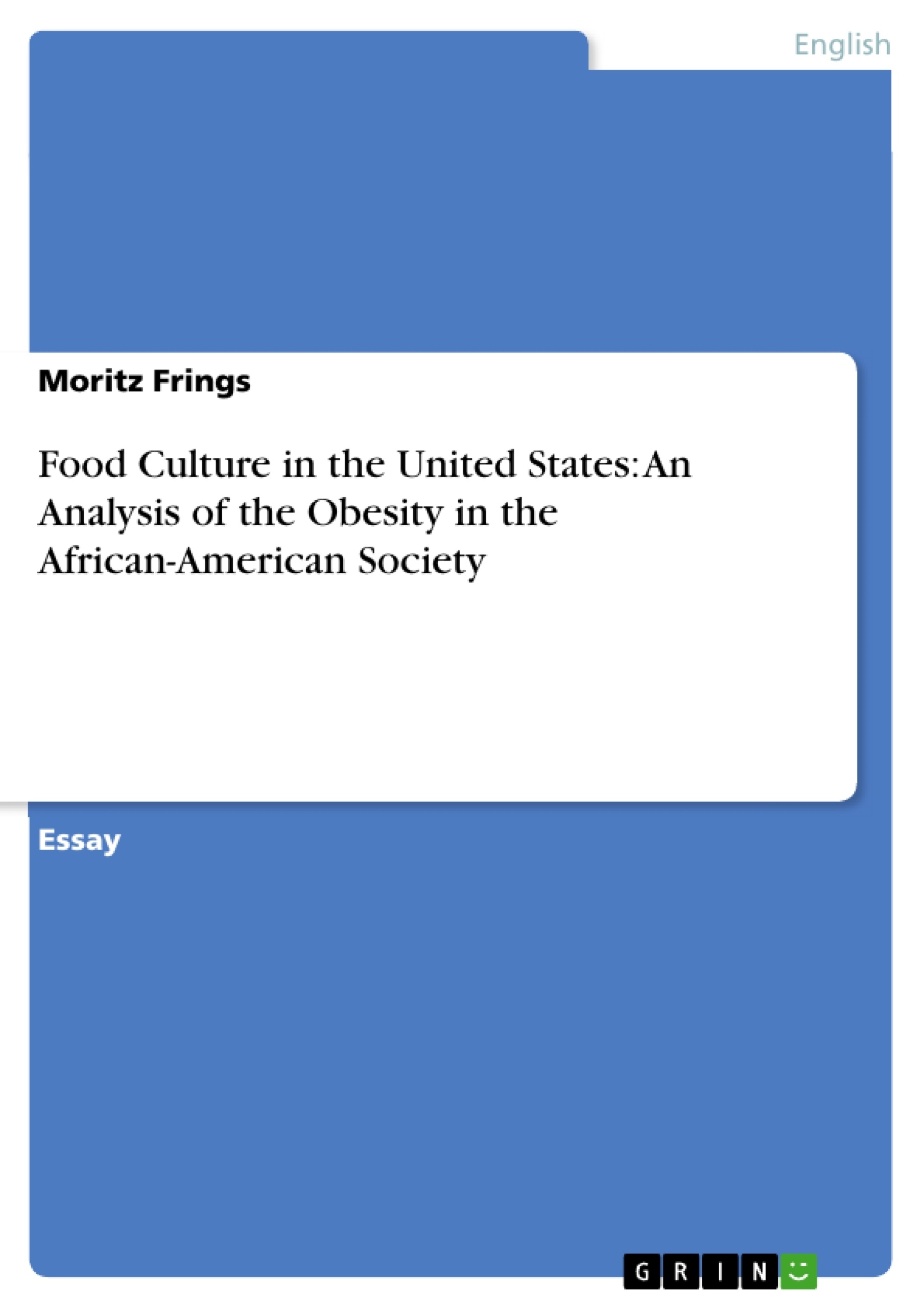Food cultures evolve over time and it is important to analyse cultural and sociological influences, when analysing the development. The roots of the African-American food culture were formed during the slavery in the United States of America. This paper analyses the history of the African-American food culture, as well as the roots of the traditional soul food. Furthermore it aims to analyse whether there is a relationship between historical facts and the obesity, which many African-Americans face today.
Inhaltsverzeichnis (Table of Contents)
- Introduction
- Discussion of Literature
- Historical Context
- African-American Food Society
- Modern African-American Food Culture
- Eating-Out: Soul Food
- Cooking and Food Choice
- Misperception
- Conclusion and Recommendations
Zielsetzung und Themenschwerpunkte (Objectives and Key Themes)
This research aims to analyze the cultural and sociological influences on the African-American diet, particularly focusing on the origins of "soul food." It investigates the historical context of slavery and its impact on the development of African-American food traditions. The study seeks to understand the connection between socio-economic factors, dietary choices, and health outcomes in the African-American community.
- The historical context of slavery and its influence on African-American food culture
- The evolution of African-American food traditions, including "soul food"
- Socioeconomic factors contributing to dietary patterns and health disparities in the African-American community
- The role of food culture in shaping identity and social relationships within the African-American community
- The impact of modern food practices on the health and well-being of African-Americans
Zusammenfassung der Kapitel (Chapter Summaries)
- Introduction: This chapter introduces the concept of food culture and its evolution over time, highlighting the sociological influences on dietary practices. It also establishes the historical context of slavery and its impact on the formation of African-American food culture, focusing on the challenges faced by slaves and their influence on modern eating habits.
- Discussion of Literature: Historical Context: This chapter delves deeper into the historical context of slavery, exploring how the harsh conditions and limited access to nutritious food during slavery contributed to the development of "soul food." It examines the legacy of these historical experiences and their lasting impact on African-American food traditions.
Schlüsselwörter (Keywords)
This research focuses on African-American food culture, soul food, slavery, historical context, socioeconomic factors, dietary patterns, health disparities, identity, and social relationships. It explores the intersection of food, culture, and health within the African-American community, highlighting the importance of understanding the historical and social determinants of dietary practices.
- Citation du texte
- B.A. Hons. Moritz Frings (Auteur), 2012, Food Culture in the United States: An Analysis of the Obesity in the African-American Society, Munich, GRIN Verlag, https://www.grin.com/document/207378



